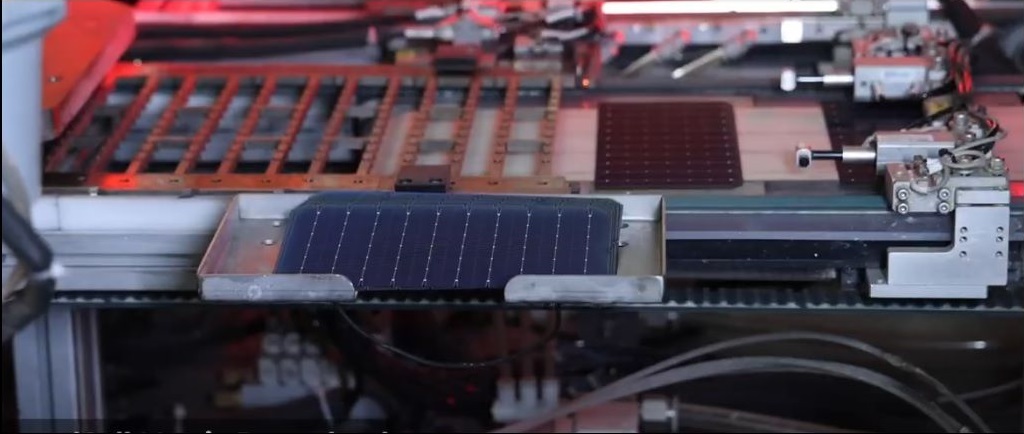India’s progress on the renewable energy front has been exemplary. However, the lack of large-scale domestic production for upstream photovoltaic value chain products leaves the country heavy reliant on solar imports, notes Prashant Mathur.
Indeed, India’s progress in adopting renewable energy has been truly revolutionary. India has committed to achieve a renewable energy capacity of 500GW by 2030 with approximately 300GW coming from solar power. In the last ten years, the nation has become a top global player in solar power due to a mix of effective government strategies, technological progress, and an increasing dedication to sustainability. The solar PV industry’s aggressive efforts have led to this transformation as India aims for self-sufficiency in manufacturing solar equipment, especially solar cells and modules.
To understand the significance of this shift, it’s essential to look at the numbers. The country’s collective module manufacturing capacity has increased from 30 GW in March 2023 to 45 GW in March 2024. This growth trajectory is expected to continue with projections indicating that India will produce around 110 GW of modules by 2026. If achieved, this would make India the world’s second-largest producer of solar modules, trailing only China.
Government Initiatives
Since 2014, the Indian government has placed a renewed emphasis on expanding solar power installations across the country. As one would expect, the results have been nothing short of remarkable. Solar energy has become increasingly competitive with its unit cost now rivalling that of traditional energy sources. This affordability has spurred widespread adoption, leading to a substantial increase in the country’s solar capacity. Such progress secures India a higher table for a sustainable future and reduces dependence on external sources.
A key driver behind this growth has been the government’s Production Linked Incentive (PLI) scheme which has been instrumental in attracting manufacturers to set up large-scale production facilities in India. This initiative aims to deliver the country’s expanding demand for solar equipment and build a self-sustaining ecosystem that can compete on the global stage. The PLI scheme ensures that India can produce high-quality solar cells and modules domestically as it covers the entire value chain from raw materials to finished products.
The government has also implemented several other measures aimed at boosting local manufacturing. For instance, the Domestic Content Requirement (DCR) mandates that certain government-backed solar projects must use locally manufactured solar cells and modules. This includes initiatives like the CPSU Scheme Phase II, PM-KUSUM, and the Grid-connected Rooftop Solar Programme Phase II, as well as the newly launched PM Suryaghar Yojana. These measures ensure that government subsidies directly support Indian manufacturers.
Decreased usage of Indian production facilities negatively impacts the pricing of their modules, making it difficult for domestic players to compete with global rivals in terms of both quality and pricing.
Overcoming Challenges
While these policies have provided a solid foundation for growth, challenges remain. With a 5 per cent share in manufacturing capacity, India could be among the top five module producers globally but a significant portion (around 10 GW) is either outdated in terms of cell sizes or not utilized effectively. One of the significant hurdles is the continued reliance on imports for essential raw materials like polysilicon and wafers which are crucial for solar cell production. India’s solar manufacturers are still grappling with this dependency.
India has faced challenges in keeping up with advancements in PV technology and are producing significantly less than their maximum capacity. Decreased usage of Indian production facilities negatively impacts the pricing of their modules, making it difficult for domestic players to compete with global rivals in terms of both quality and pricing. The production of solar modules is complex and requires significant capital investment. These challenges must be overcome if India is to move from being a laggard to a leader in the global solar industry.
Conclusion
India benefits from abundant solar irradiance and receives sunlight year-round, creating numerous opportunities for harnessing solar energy, particularly in sun-rich regions such as Rajasthan, Gujarat, and Andhra Pradesh. Coupled with foreign investments and extensive research and development efforts to enhance technology, the Indian solar energy market is poised for significant growth. However, India cannot achieve self-reliance in solar technology without a comprehensive and integrated manufacturing strategy. The lack of large-scale domestic production for upstream PV value chain products leaves the country vulnerable to risks such as logistics challenges and fluctuations in commodity prices caused by heavy reliance on solar imports. To increase solar capacity by more than 30GW annually, it’s crucial to continue supporting current and upcoming players to ensure supply meets demand closely.
About the author: Prashant Mathur is CEO, Saatvik Solar

